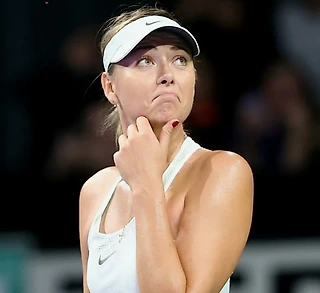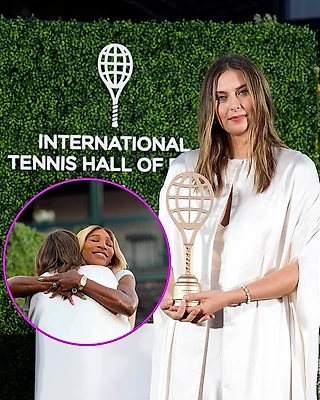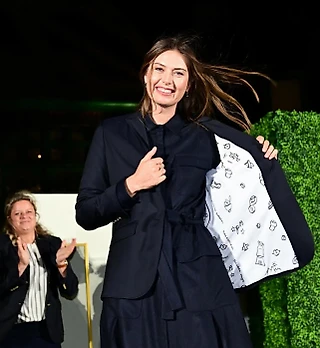Firsts for Everyone
Выставил статью Steve Tignor
PARIS—“Come on, Sam.”
The words, conversational rather than emphatic, have floated down from Sam Stosur’s player box in Court Philippe Chatrier. They sound less encouraging than they do concerned, and there’s a good reason why. Stosur is serving at 3-4 in the third set of her semifinal against Sara Errani, and she's just launched a forehand into the backstop on a fly. Aside from the sound of flags snapping in the wind, the arena is silent. Halfway up in the stands, you can feel Stosur's anxiety.
The Australian, a finalist here in 2010, is the heavy favorite against Errani. She’s won all five of their previous matches. She’s been saying all week how, after years of debilitating nerves at the majors, she’s more calm and comfortable now. And, in her quarterfinal with Dominika Cibulkova, Stosur has just shown that she knows how to beat an undersized opponent like Errani. But the story has been different today. The 5-foot-5 Italian, commonly referred to as a “terrier who won’t let go of your leg,” has fought back against Stosur’s big kick serve and heavy topspin forehand. When Errani showed Stosur that she could hit with her in the first set, and that she was going to take the rallies to her when she could, Stosur reacted by getting as tight as a proverbial drum.
At 3-4, Sam tightens up again. She responds to the concerned advice from her camp by hitting an easy ball right back at Errani and losing a point. (Stosur does this often enough that a writer next to me jokingly wonders if her sunglasses are blocking her view of her opponent.) At deuce, she double faults. On break point, she hits a forehand wide, one of her 48 unforced errors on the day.
Asked about her nervousness later, a smiling but pale Stosur says, “I don’t know if [my nerves] beforehand affected me throughout the match. I just didn’t do enough really. I got a little bit on the back foot. I didn’t [play well] at the times when it really obviously mattered.” Too often Stosur went for the quick kill rather than working the point for a better shot, something that, with a little more patience, she should easily have been able to get against her overmatched opponent.
Stosur looked shaken as she walked off the court, but she said she didn’t feel like the loss was a setback, despite how calm she had claimed to be beforehand. For the second time in three years, she was caught off-guard by a spunky Italian underdog—under-terrier?—who brought a fearless, nothing-to-lose energy into Chatrier. Errani had lost to Stosur just a few weeks ago in Rome, but she said today, “The good thing was that the match in Rome was also depending on me. It wasn’t just about her.” She had imposed herself and played her game. (The bad thing, according to Errani? “I play not a good match.”)
Errani played with purpose in the first set—she made the match depend on her—and in the third she fought off her own nerves. As Stosur acknowledged, Errani hid her weaknesses well. When Sam began by ripping her second serve for return winners, Errani stopped hitting second serves. She made 86 percent of her first balls for the day.
This match didn’t give us brilliant play or a vicious battle. It’s interest lay in seeing the two women swing back and forth between confidence and uncertainty. Errani ended on the upside of that pendulum, playing perhaps her most assertive game when she served for the match and held at love.
“I was very nervous,” Errani said of those closing moments, “but at the same time I was really focused on the game. Try to forget everything, forget where I am. Just want to forget and try to do what I want to do, put the ball where I want to put it.”
Errani, who had never reached a Slam semifinal previously, and who before this week had lost 28 straight matches to Top 10 opponents, won’t be able to forget where she is now. She also may not be able to believe it. It’s more than she dared to dream.
Asked if she ever fantasized, before the tournament started, that she could be in the final, Errani’s blue eyes widened.
“No, I didn’t think about that never.”
******
By the time Maria Sharapova and Petra Kvitova take the court, the sky is clear and the flags at the top of Chatrier are no longer snapping in the wind. They’re flying straight out in what may be the strongest gusts of the tournament.
There’s been speculation through the day at Roland Garros about how Sharapova’s serve, which has betrayed her at the end of so many events, will stand up to the swirling, changeable conditions. When Kvitova holds in the first game and Sharapova takes the balls, we appear to get our answer immediately: She hits her first serve into the clay three feet in front of her.
But this match, and this tournament, means too much to Sharapova for her not to fight the elements with everything she has. She survives a break point in that opening game when Kvitova hits a regulation forehand into the net (that turns out to be the real sign of things to come). At game point, Maria’s toss and motion are strong, and she extends farther into the court than she normally does. The serve is a winning one, and she holds. She's on her way.
Most striking about Sharapova’s game this afternoon is her depth of shot. She let Kvitova have her way in rallies at Wimbledon last year, and there’s a sense today, in this wind, that she’s determined to stay in control in the safest way possible. She hits to the corners, and she hits for length, but she doesn’t go for broke. Kvitova is unable to do what she loves to do, step in and hammer the ball from on top of the baseline.
“It was tough to play a great match because of the conditions,” Sharapova says. “I think most importantly it was about playing a solid match. If you get frustrated by a few mistakes, it can get you down.”
Up 3-1 and serving in the second, three points from her first Roland Garros final, Sharapova suffers a rare spasm of jitters. She hits a forehand over the baseline to be broken, and flashes a fearful look up to her box. It’s not an expression you see often from Maria; she’s been so close so many times recently, could she be denied again? A revived Kvitova holds for 3-3 and reaches 30-30 on Sharapova’s serve. This is when Maria gets some help from an opponent who shows her inexperience.
Kvitova doesn’t change her own go-for-broke game to suit the conditions, and doesn’t make a shaky Sharapova play. Instead, she swings for the fences on her next return and hits it long. The same thing happens on the next point, except that her return, which is called out, appears to catch the baseline. Sharapova at first points tentatively to a mark, then throws her hands in the air. It seems that the call will be overruled by chair umpire Louise Engzell. Except that it isn’t. Engzell, who also chose a mark incorrectly at a crucial moment in the last year’s women’s final here, raises her finger to let Kvitova know it was out. Hawk-Eye shows that Engzell was wrong again.
Kvitova, never quick to anger, lets it get to her. She tries to pound the ball harder in the next game, but it doesn’t work—unlike Jimmy Connors or John McEnroe, the quiet Czech doesn’t thrive on antagonism. The match ends in deflation, with a string of errors off of her racquet.
By the time she reaches the press room, Kvitova appears to be over it. She smiles her unassuming smile, credits Sharapova for playing well, and says she’s ready to prepare for grass. Again, she leaves us with a question about her attitude and desire: Is Kvitova’s ability to shake off defeat so easily a good sign or a bad sign for her future? For now, she has reached her first semifinal at Roland Garros, and hopefully learned something in defeat: Anger isn’t her thing.
Sharapova, who may be playing her best and most consistent tennis in four years, reclaims the No. 1 ranking and has a chance to become the first woman to achieve a career Grand Slam since Serena Williams completed hers nine years ago. Who, as she asked the assembled press today, would have thought a few years ago that she would ever be in a French Open final? The only thing more unlikely is how this woman who has struggled for so long with shoulder problems made it there: With a second serve ace.










